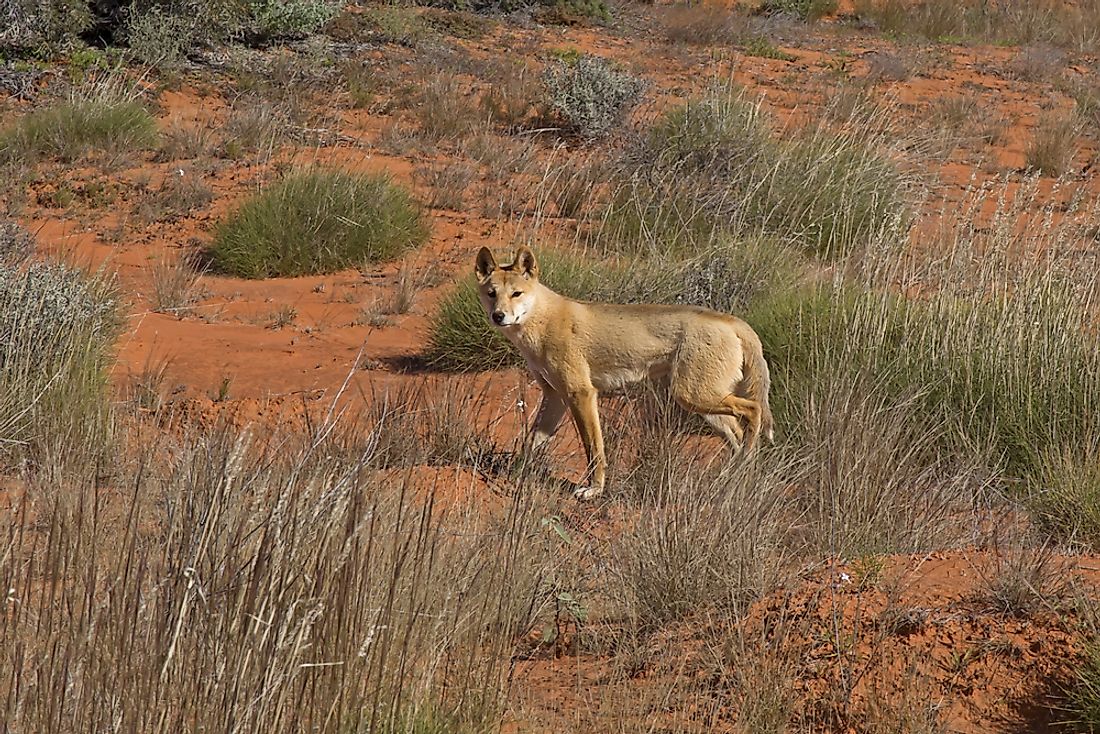Where Does The Dingo Live?

Dingoes are a species of dogs which have wild populations only found in continental Australia. The animal is small-sized with adult males being 35 pounds in weight and 49 inches in length. However, the population of the dingo has plummeted in recent years, a worrying trend which has been blamed on the hybridization of the animal with domestic dog breeds. The animal is protected under Australian law as a native animal species.
History of the Dingo in Australia
Some scholars believe that dingoes are not native to Australia as the animals are believed to have been introduced to the continent by seafarers from Indonesia. The animal’s fossils found in Australia supports the theory that the dingo arrived in Australia some 4,000 years before present.
The dingo coexisted relatively peacefully with indigenous tribes of Australia for thousands of years. However, the arrival of Europeans in the 18th century and subsequent introduction of large-scale agriculture in Australia placed the dingo on a collision course with humans as the animal hunted livestock. To curb the predation of livestock by the dingoes, farmers employed drastic measures including erecting huge barrier fences.
The destruction of habitat compounded by indiscriminate hunting was detrimental on the population of the dingo and ultimately led to its extinction in regions where it was originally found in large numbers including Victoria, New South Wales, and southern Queensland.
Habitat and Diet
The dingo is only found in mainland Australia where the animal thrives in different types of habitats. Due to its successful adaptation to suit Australia’s ecosystems, the animal is classified by ecologists as an ecotype. The dingo is a top predator in all the ecosystems where it is found. Some of the animals which make up the dingo’s diet include cattle, red kangaroo, magpie geese, fish, European rabbits, and dusky rats.
Living with Humans
Dingoes can also be found coexisting with humans as tamed animals. The dingo is tamed for many purposes most important of which being to become pets. Modern taming methods involve selective breeding of the dingo and even breeding the dingo with domestic dog breeds (hybridization) to come up with a desired type of dingo. While the dingoes have inherent wild traits, effective taming methods can turn the animal into an affectionate pet. However, the tamed dingoes normally escape from human residence upon reaching maturity and will make use of any breaches in the fences to escape. The hybridization of dingoes and domestic dogs has also been vehemently fought against by conservation groups as it is said to result in loss of genetic diversity in the dingoes which make them susceptible to diseases.
Relation to the Domestic Dog
Genetic analyses on the dingo show that it is a subspecies of a gray wolf, albeit as a sister taxa. Despite being similar to dogs both in physical appearance and behavioral traits, the dingo has numerous distinctive characteristics which set it apart from dogs. An example is that unlike dogs, dingoes communicate through howling and they do not bark.











